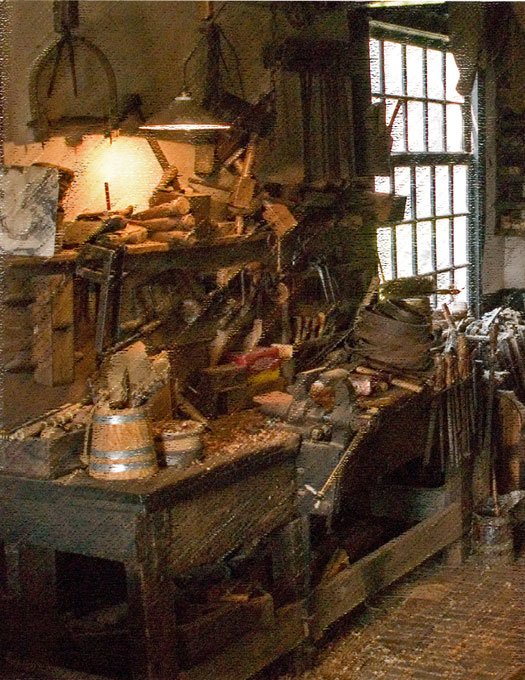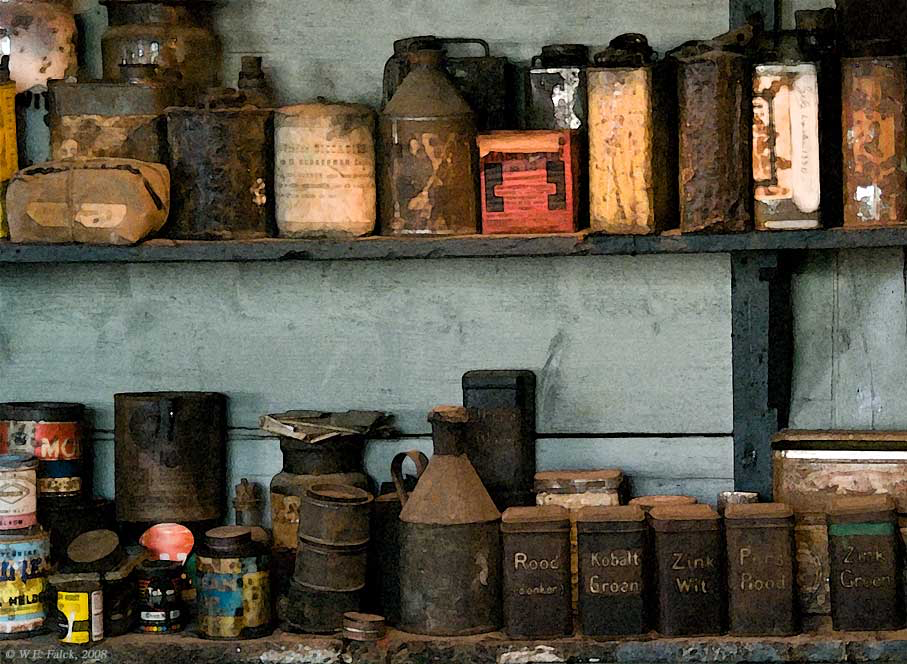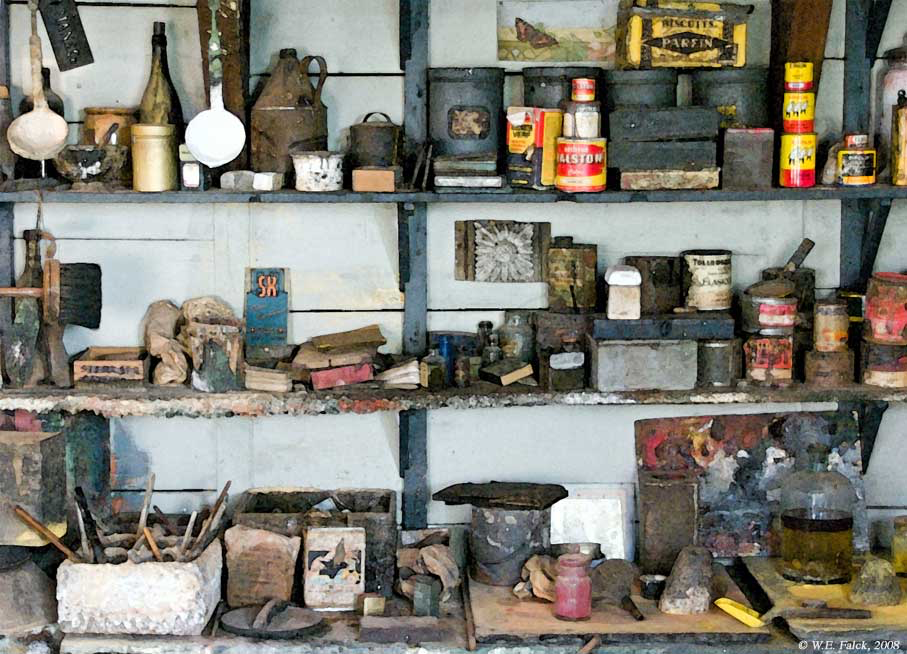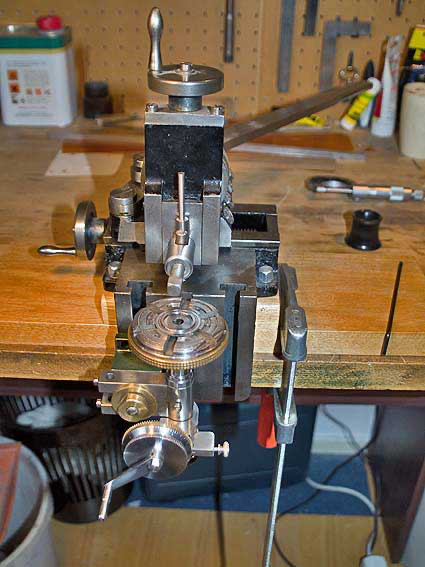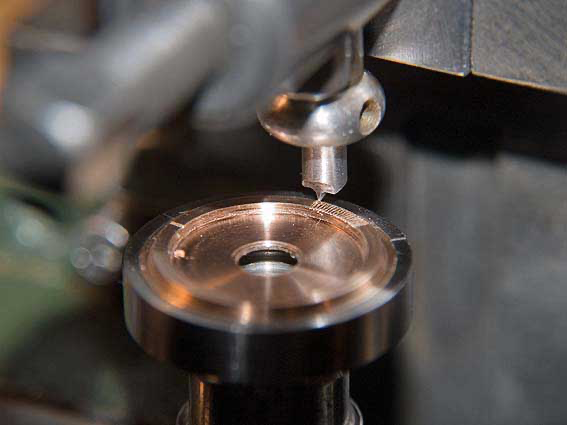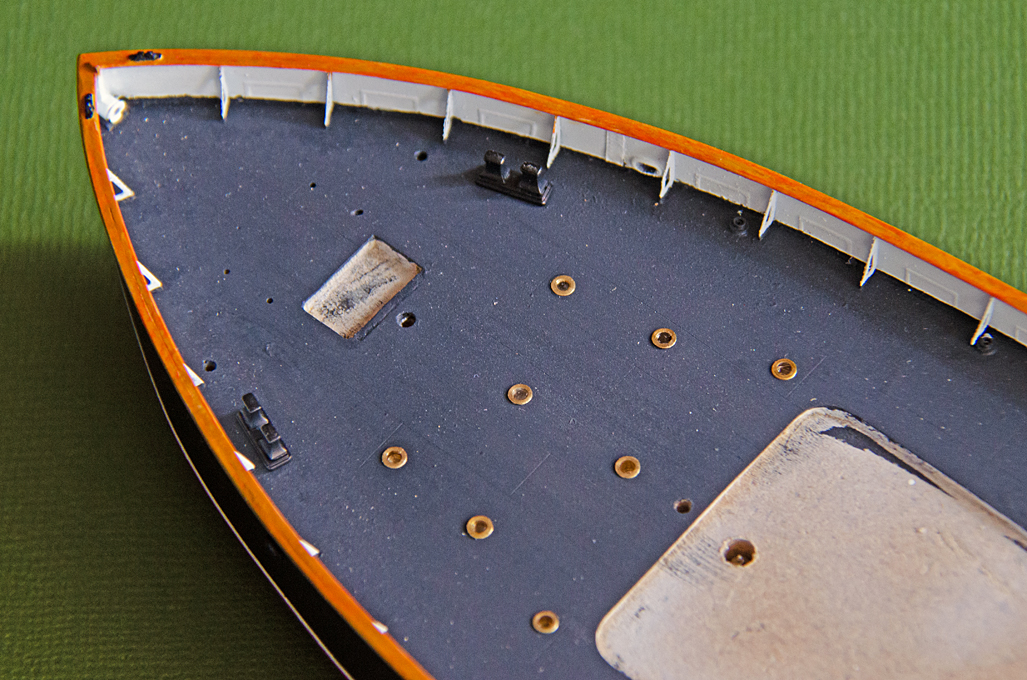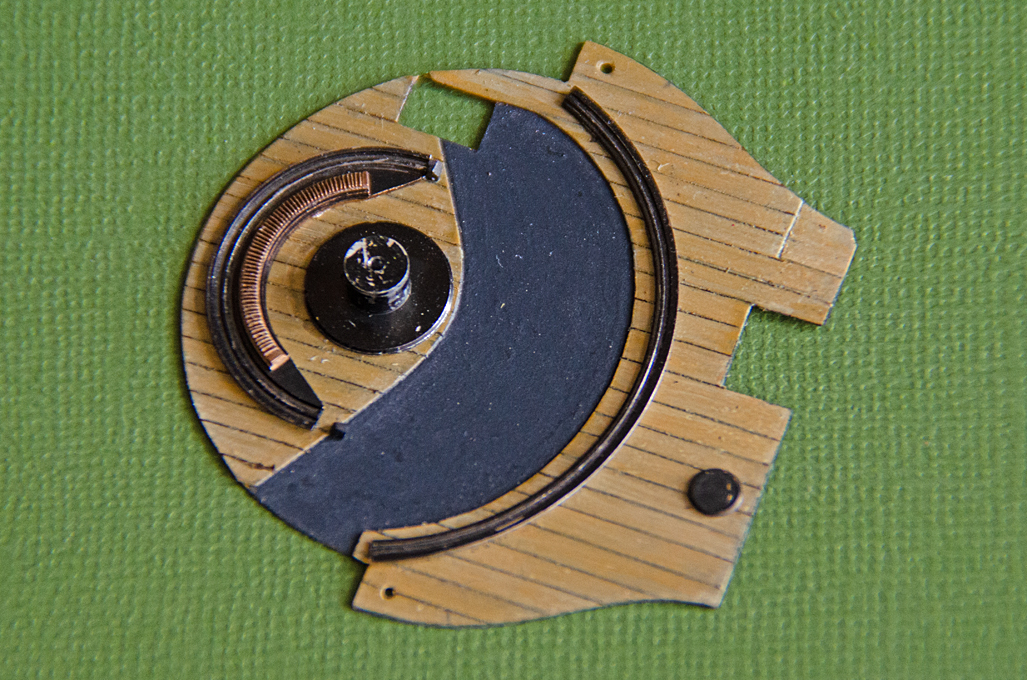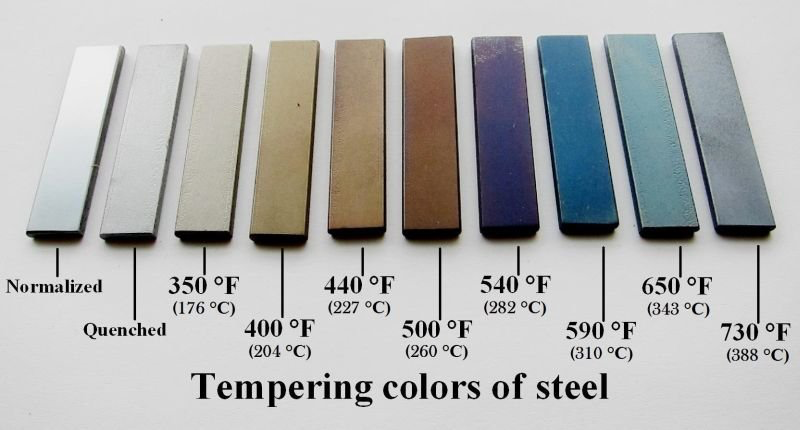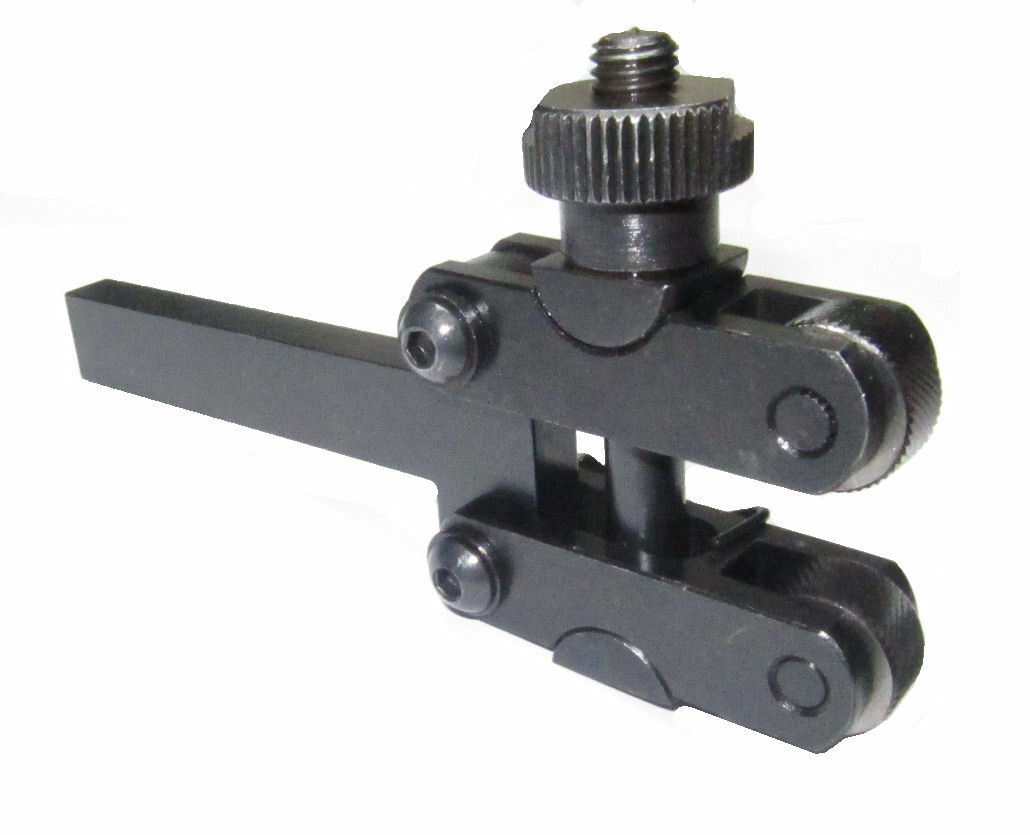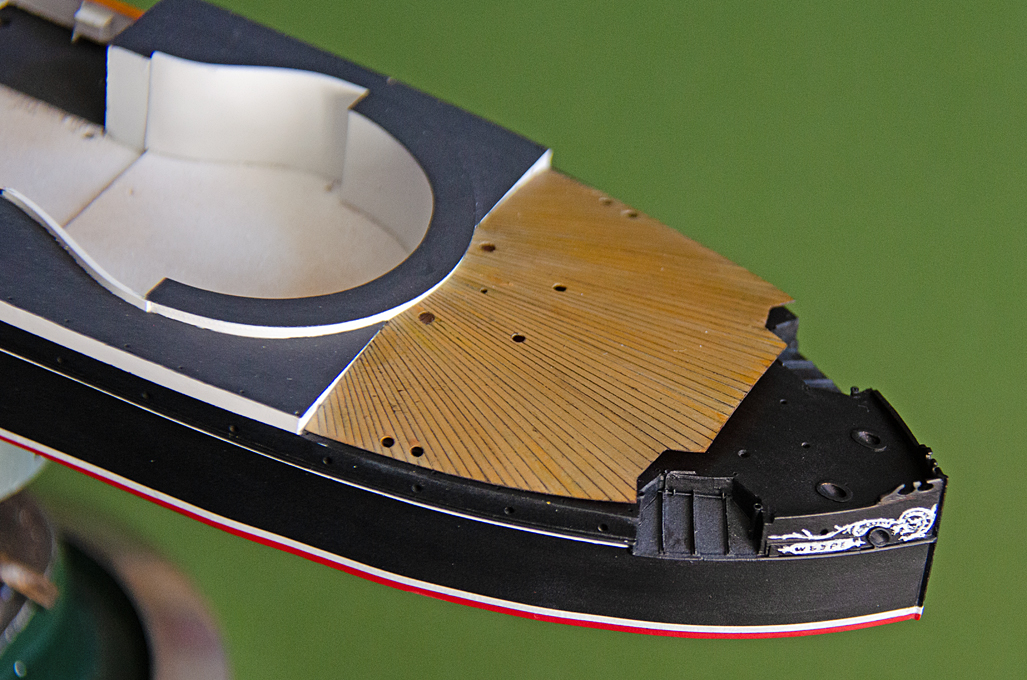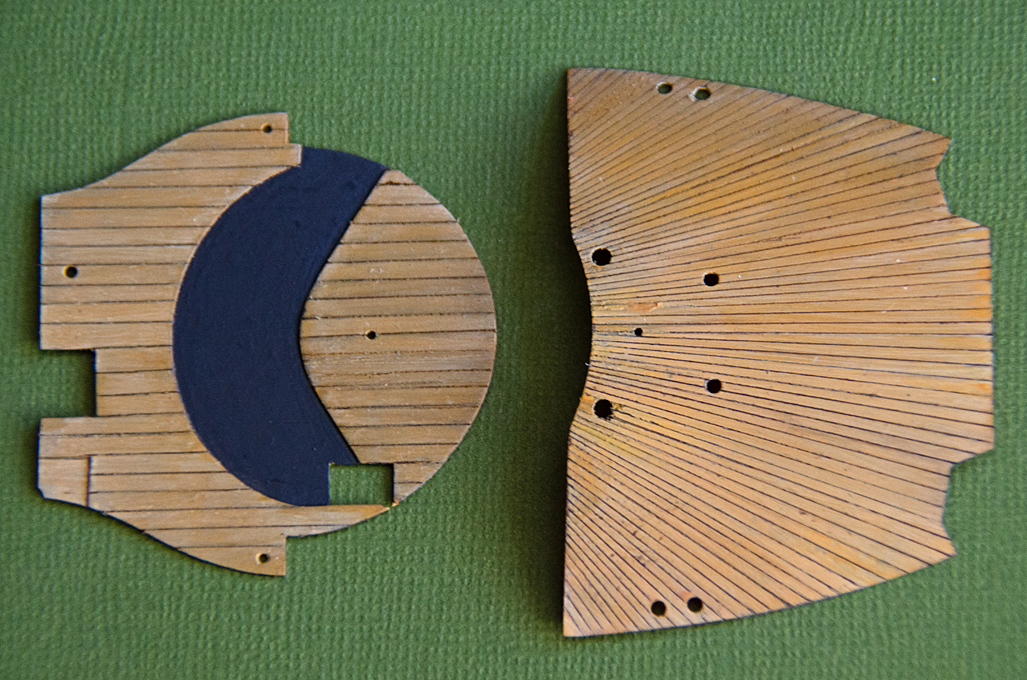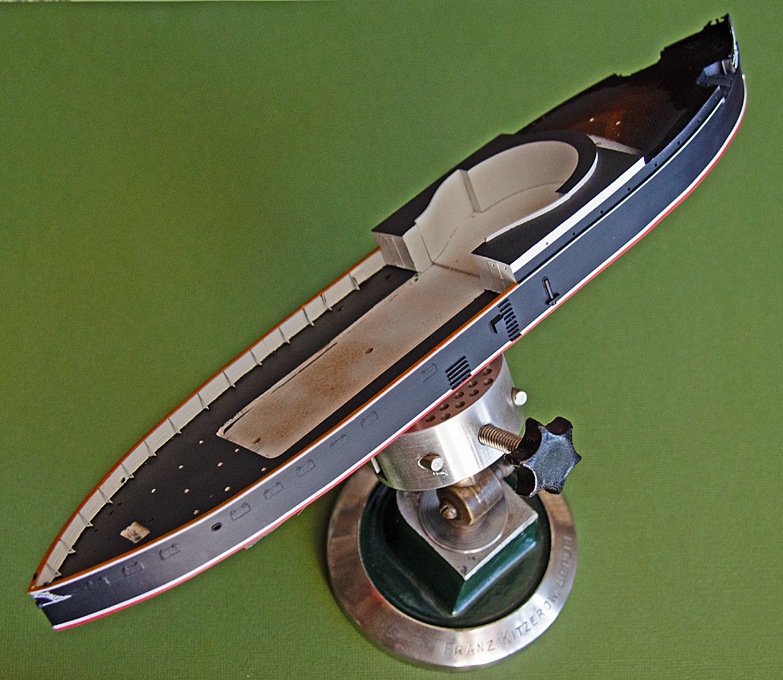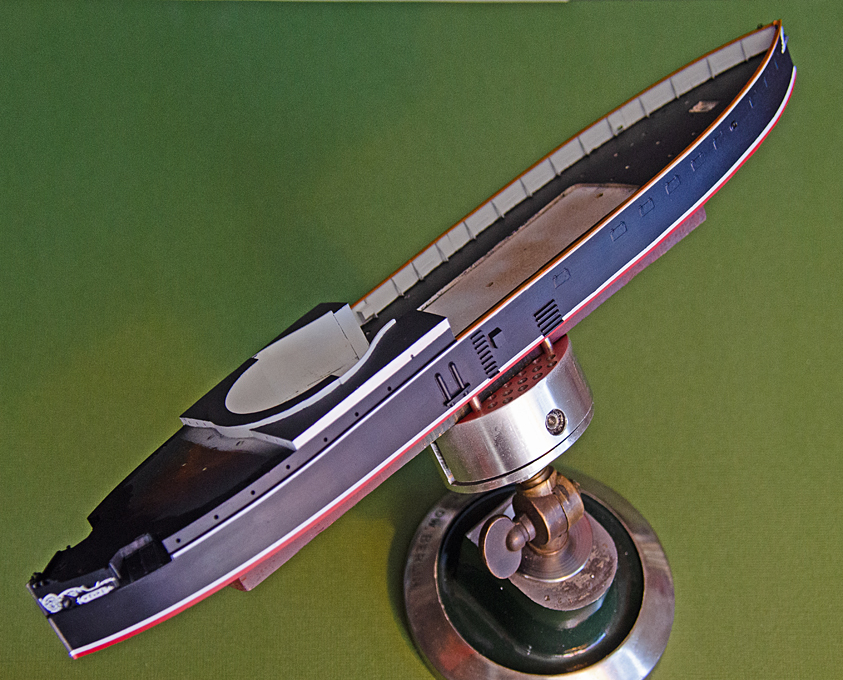-
Posts
6,529 -
Joined
-
Last visited
Content Type
Profiles
Forums
Gallery
Events
Everything posted by wefalck
-
NiCr-wire is used in heating elements e.g. for toasters, so it is available in a wide variety of diameters, but it is very tough to cut. 0.001" are actually 0.0254 mm - still very thin. McCaffery uses the twisted NiCr-wire for all his rigging, regardless, whether it was hemp or iron/steel. He also seems to paint all the rigging black, regardless, whether it is running or standing rigging. Personally, I don't quite like this idea, as suitable beige paints are available.
-
"Figure 153: Bottles (probably containing Eau de Cologne). They will be hanging on the wall above the sink." From the distance they look like the dispensing bottles for liquid soap. They were made either from glass (so that you could see the level of filling) or porcelaine. At the bottom there was a sprung valve (the sping is in the cylindrical part sticking out from the top). You pushed the knob at top to let soap out. In another variant you pushed the valve up with your hand underneath - the always leaked. Until the 1970s they were ubiquitous in railways, public toilets, hotels etc., when they were replaced by plastic bottles. Nice progress on little details ...
-
McCaffery was/is my bible for miniature ships, but his method of block-making is really only applicable to his rigid twisted metal-wire rigging. He basically punches out oval paper discs with custom-made hollow punches and then sticks these on both sides of the crossing between wires or he builds up tackles by glueing strands of twisted wire to discs. One could think of adapting the method by substituting thread for wire. It would probably work for simple tackles with single-blocks. Not sure how one would do with double blocks. I have tried to go (partially) down that route, but found it difficult to align the discs to each other with sufficient precision. Rather than punching the block cheeks, I cut them with my laser-cutter. So far, I managed to produce blocks down to 1.5 mm with miniaturised traditional methods, but will have to face making 1 mm blocks in the near future.
-
The rack was cut (a looong time ago) on my hand-shaper with a dividing head clamped to it: I ground a special cutting tool for this:
-
Thanks, gentlemen, for your appreciation ! ************************************* Kitting out the deck Painting the various parts takes quite a bit of time. Some parts can be spray-painted, while other parts need to be brush-painted because either they are difficult to mask for different paints or because the parts are too delicate for this. The deck of the barbette was fitted with the pivot, races for the gun and the rack that is used in training it. These parts were made a long time ago. The races are turned from steel, because I always think nothing looks like metal as real metal. Although, the races were probably rolled iron (like railway tracks), they looked to bright. So they were painted black all over and then the areas that likely show wear from the rollers of the lower carriage were rubbed with a lead pencil. In some areas also the paint come off again. Overall this gives the races a used look. The toothed rack was bronze and hence was made from bronze. There is also the lid of the opening through which the powder-charged was man-handled up from the powder-chamber beneath. Deck for the barbette with pivot and races for the gun installed The rear deck was fitted with the brass skylights that illuminated the quarters of the officers and other rooms. These were like portholes, but not moveable and had thick glass inserts. On the underside the inserts were shaped as multifaceted pyramids to collect and distribute the light from the deck above. The brass insert were turned and the glass simulated by pushing the brass parts into a drop of Acrifix 192 on a piece of smooth aluminium foil. The bright side of the aluminium-foils imparts a glass-like finish to the cured Plexiglas glue disc. I left the brass bright for a bit of contrast and interest to the deck. At the moment it looks to ‘model-like’, but over the years the brass will dull by oxidation to a more realistic colour and sheen – though I have no information on what they really looked like at that time. The glasses presumably dulled with time by the crew walking over them. It might have been better to imitate with a drop of white glue instead. The double bollards and coal-scuttles (not visible on the image) were painted black as per prototype and installed Rear deck with sky-lights and bollards installed To be continued ....
-

Which first, hull or deck
wefalck replied to ubjs's topic in Building, Framing, Planking and plating a ships hull and deck
Personally, I tend to leave painting to the very end in order to not damage the paintwork during the building process. Other people paint as they go along, which perhaps also has motivational aspects, as you see something that looks like the finished model for a long time. In my case, the model may not look like much for a long time and then suddenly it emerges almost complete. It also depends on the accessibility of areas to be painted and the possibility to mask-off areas to prevent paint (or a different colour) from getting to them. -
Sailing ship often spent weeks or months in port, waiting for cargo or the right winds for their trips. After arriving and in suitable weather, the sails may be 'shaken out', hanging limp from the yards etc., which are not raised - in order to dry. According to old photographs, this was a rather common sight. And this is most difficult way of showing sails, as in this state the thickness of the material becomes really perceptible through the creases and pleats they form - most materials, even silkspan, are too thick to represent this convincingly.
-
I love those dioramas ! It is true, there is never a enough clutter to make - just look around your own workshop and compare One thing I was wondering about (even in those less safety-preoccupied times than today): shouldn't there be any stops at the end of the rails for the car to prevent it from overrunning ? Also some rails left and right might be helpful to keep it on track ...
-

Definition of 'Single' WRT rigging/ropes
wefalck replied to BANYAN's topic in Masting, rigging and sails
My understanding of the term 'single' has been that no purchase, i.e. mechanical advantage was provided by the block(s) involved, only a change of direction. In this case only a block at the mast doubling would be provided. I realise that this does not explain the extra length of the rope specification ... -
The bolt-rope diameter is proportionate to the size of the sail and the weight of the cloth used to make the sail. Check out the above references and work it out for your model. There is no off-the-shelf recipe.
-
You could check out CONSOLIN, B. (1863): Methode pratique de la coupe des voiles des navires et embarcations. Suivi des tables graphiques facilitant des operations diverses de la coupe avec ou sans calcul, ouvrage offrant aux capitaines des reseignements utiles à la mer.- 194 p., Paris (Mallet-Bachelier). MERLIN, J. (1865): Traité pratique de voilure ou exposé de méthodes simples et faciles pour calculer et couper toutes espèces de voiles.- 226 p., 7 pl., Paris (Arthus Bertrand). They are both available as eBooks and may have information on the proportionate size of bolt-ropes. To my knowledge, jibs would have bolt-ropes on all sides. Most of the sails of ocean-going ships from the 18th century onwards would have bolt-ropes all around, as they help to distribute the strain of the various attachment points.
-
The unused anchor-cable my be just lead underneath the spill and lashed at a convenient point. The diameter of the cable would beed to be calculated from the weight of the anchor. There are contemporary textbook sources for this, but I don't have them at the tip of my fingers. Perhaps someone else can chip in here.
-

Where can I find metal wire?
wefalck replied to flying_dutchman2's topic in Metal Work, Soldering and Metal Fittings
Try molybdenum and you will love piano wire However, the hard temper can be drawn out of piano wire by cautiously heating it up with a torch. The different oxidation colours will give you an indication of the hardness: Try on samples until you get the hardness/springiness you want and then always heat to that temperature. -
Indeed, their naval books I have seen are colourful, but being tertiary references, of rather limited value. Just looked up MAGENTA in 'Conway's All the World's Fighting Ships 1860-1905' (secondary reference) and there MAGENTA is down 16 55 pounder smooth bores, 34 6.4 in (= 162 mm) breech-loaders M. 1860, and 2 8.8 in (= 224 mm) rifled muzzle-loaders. This sounds quite credible and I will have a look, what I can find about these guns in my primary references.
-
nutricious 🤭
-
This kind of holder to fit into the toolpost can be bought at reasonable prices: For light knurling in brass a simple holder to feed straight into the part may be sufficient. Be aware, that knurling forms sort of triangular ridges - gear teeth look somewhat different, with sort of vertical flanges and a space at the bottom between the teeth.
-
I gather the tallow used in tanning is quite nutrious
-
The colour of the sail cloth, of course, depends on the material that was used. In Europe mostly flax and hemp were used, while in the US, I believe, early on cotton was used. Flax and hemp are a very light yellow-grey, if not bleached (which was only done for garmanents etc.), while the cotton fibre is already white. Tp preserve sails on small fishing craft that did have little time to dry their sails properly, the sails were impregnated - tanned. Various procedures and concoctions were used, but in typically contained tallow, lineseed oil and ochre. The ochre gives the distinctive colour that can range from a light yellow to a deep red. While in northern Europe painting sails went out of fashion around the 16th century or so, it persisted in the Mediterranean into the 20th century. Some Adriatic craft have rather colourful sails that serve to distinguish individual boats, but also may have 'protective' or 'votiv' functions (there may saints or their symbols being painted on, for instance).
-

Firing a replica 18th century naval cannon - damage
wefalck replied to Louie da fly's topic in Nautical/Naval History
From the middle of the 19th century on many navies carried out systematic experiments with mock-ups of wooden and iron 'walls' and different types of guns and projectiles. I have an original French naval artillery yearbook that shows images of the effects and discusses them. When in the mid 1850s rifling and ogival projectiles were introduced, this gave greater penetration power, but on the other hand, the projectiles went straight through wooden ships with causing less damage and less desired 'collateral' damage by splinters. Therefore, for a while ships carried both, old-style smoothbore muzzle-loaders and more modern rifled muzzle- and breech-loaders in order to have the right tools for the different jobs. The development of safe and reliable time-fuses in the 1860s for shells that could be fired from rifled guns solved that problem ... -
That's probably true, Bedford, but only that way we improve ****************************************************** More Paintwork According to the 1874 ordinance on paintwork, the ships were to have a white boot-topping stripe and a somewhat narrower white stripe just below the main rail. This scheme is clearly visible on the old photograph shown in the previous post. At that time also all the scroll-work was to be painted in a sober white, rather than the ochre/gold of later paint-schemes. It occurred to me that the easiest way to apply the white stripes on such a small model would be to cut narrow strips of white decal sheet and to place them appropriately. However, the latter part resulted in a lot of stress, fumbling and cursing. These long, narrow strips needed a lot of coercing and touching up with white acrylic in places. As I do not work with decals very often these days, I did not have any decal-softener to hand, which might have made this operation somewhat easier. In the end, the strips had to fixed additionally by infiltrating dilute satin varnish underneath them with a brush. In order to blend everything together, the hull then was given a coat of satin varnish. Perhaps the Prince August Air varnish was too viscous still for the air-brush, but when sprayed on it turned out rather matt and made the hull grey! Brushing on another thin layer got me over the shock moment. Perhaps it would have been easier to air-brush everything in white and then cut a narrow strip of Tamiya masking tape to mask the area of the white stripes and also to mask strategically for painting the hull in red and black … The scroll-work at the bow and stern then was picked out in white acrylics using a spotter brush and a (reasonably) steady hand. Wooden decking for the barbette and the forecastle. I also painted the only two pieces of wood decking on this ship, namely that on the forecastle with the distinct radial plank pattern (to minimise blast damage from the heavy gun) and within the barbette. The planks had been engraved a long time ago already with a hand-graver. The pieces were given a base coat of Prince August 77 (bois-wood) with the air-brush. This was followed by a light wash of 834 (bois transparent), which has a slightly lighter tone, applied with a flat hair-brush. Some planks were given another light wash of Vallejo 71.074 (beige) with a small brush. The planks then were followed with 0.05 mm black pigmented ‘fine-liner’. The excess was immediately wiped off with a clean finger-tip. In this way a narrow to scale seam remains. Forecastle put into place temporarily. To be continued ....
About us
Modelshipworld - Advancing Ship Modeling through Research
SSL Secured
Your security is important for us so this Website is SSL-Secured
NRG Mailing Address
Nautical Research Guild
237 South Lincoln Street
Westmont IL, 60559-1917
Model Ship World ® and the MSW logo are Registered Trademarks, and belong to the Nautical Research Guild (United States Patent and Trademark Office: No. 6,929,264 & No. 6,929,274, registered Dec. 20, 2022)
Helpful Links
About the NRG
If you enjoy building ship models that are historically accurate as well as beautiful, then The Nautical Research Guild (NRG) is just right for you.
The Guild is a non-profit educational organization whose mission is to “Advance Ship Modeling Through Research”. We provide support to our members in their efforts to raise the quality of their model ships.
The Nautical Research Guild has published our world-renowned quarterly magazine, The Nautical Research Journal, since 1955. The pages of the Journal are full of articles by accomplished ship modelers who show you how they create those exquisite details on their models, and by maritime historians who show you the correct details to build. The Journal is available in both print and digital editions. Go to the NRG web site (www.thenrg.org) to download a complimentary digital copy of the Journal. The NRG also publishes plan sets, books and compilations of back issues of the Journal and the former Ships in Scale and Model Ship Builder magazines.


